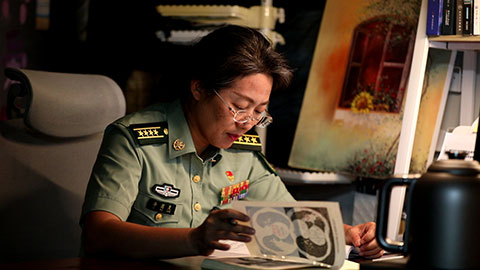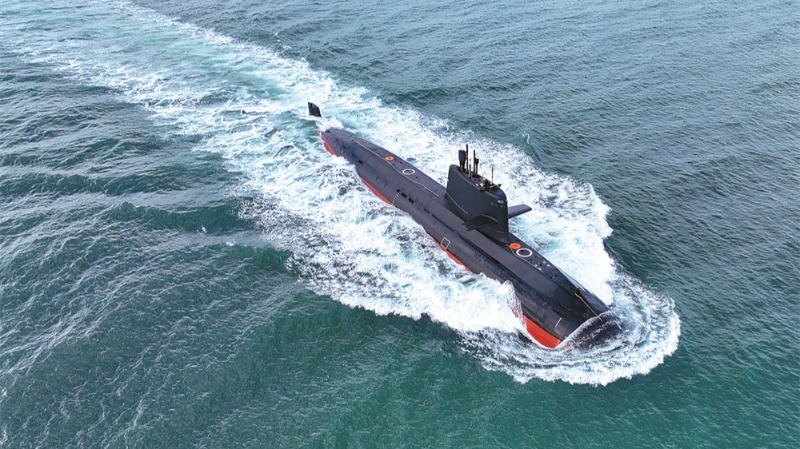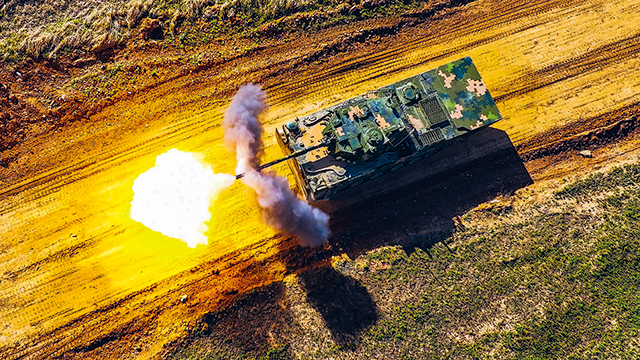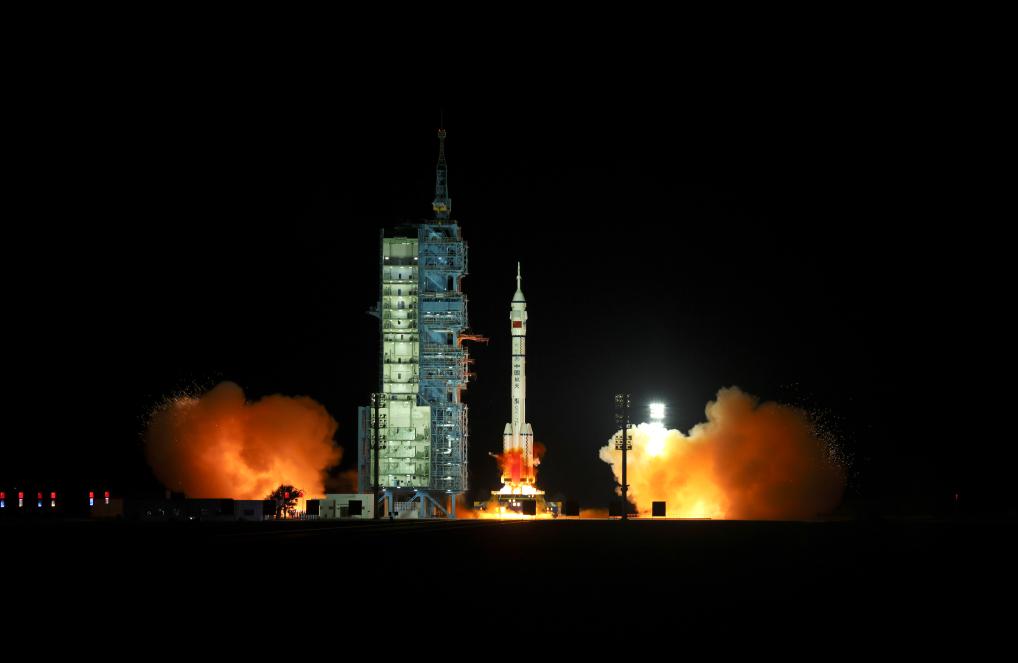
The Shenzhou-21 crewed spaceship, atop a Long March-2F carrier rocket, blasts off from the Jiuquan Satellite Launch Center in northwest China, Oct. 31, 2025. China launched the Shenzhou-21 crewed spaceship on Friday, sending three astronauts to its orbiting space station on a six-month mission. (Photo by Wang Jiangbo/Xinhua)
JIUQUAN, Oct. 31 (Xinhua) -- China launched the Shenzhou-21 crewed spaceship on Friday, sending three astronauts to its orbiting space station on a six-month mission.
The spaceship, atop a Long March-2F carrier rocket, blasted off from the Jiuquan Satellite Launch Center in northwest China.
The Shenzhou-21 crew consists of mission commander Zhang Lu, and astronauts Wu Fei and Zhang Hongzhang. These three astronauts serve as space pilot, flight engineer and payload specialist, respectively, representing all three categories of Chinese astronauts currently being applied in the country's space endeavors.
Zhang Lu also participated in the Shenzhou-15 mission, while Wu Fei and Zhang Hongzhang are both on their first space mission.
MICE IN SPACE
Notably, four mice have also gone into space along with the Shenzhou-21 crew.
These rodents, two male and two female, are being transported to China's space station to be raised in orbit for five to seven days, marking the country's first scientific experiments involving mammalian models in space.
As a key model animal in the field of life sciences, mice feature several advantages -- high genetic similarity to humans, small body size and short reproductive cycle, and a high amenability to genetic modification, said Huang Kun, an expert from the Technology and Engineering Center for Space Utilization of the Chinese Academy of Sciences (CAS).
"These traits make them ideal for studying physiological and pathological processes, as well as the growth, development and reproduction of living organisms in space," he said.
The project, jointly led by the Shanghai Institute of Technical Physics and the Institute of Zoology, both under the CAS, will involve continuous multi-dimensional video monitoring of the mice throughout their stay in orbit.
The lighting inside the mice experiment facility will turn on at 7 a.m. and off at 7 p.m., maintaining the same circadian rhythm as on Earth, explained Li Tianda, an associate researcher at the Institute of Zoology.
The rodent food is not only nutritionally balanced but also made relatively hard, to reduce crumbs and meet the mice's teeth grinding habit. A directional air flow within the facility is designed to blow hair, feces and other garbage into a collection container, ensuring a clean and hygienic environment for the mice, Li said.
By collecting preliminary data on stress responses and adaptation mechanisms in microgravity, scientists may use these observations to decode how weightlessness and enclosed space influence mice behaviors.
After completing their orbital mission, the "mice astronauts" will return to Earth aboard the Shenzhou-20 spaceship for further analysis.
"The findings will be critical to assessing the feasibility of long-term human survival and reproduction in space, and may also deliver insights beneficial to human health on Earth," Huang said, while noting that the experiment will represent a major step forward in China's space life science research capabilities.
Previous animal experiments conducted in the Chinese space lab involved zebra fish and fruit flies.
During their stay in orbit, Shenzhou-21 crew members are scheduled to carry out a total of 27 new in-orbit experiments, including space life sciences and biotechnology, space medicine, space material science, microgravity fluid physics and combustion, and new space technologies.
Research on the relationship between the origin of genetic codes and chirality, lithium-ion batteries for space applications, and intelligent computing platforms are listed among the planned in-orbit studies to be conducted during this mission.
The crew will also perform extravehicular activities and cargo handling, install space debris protection devices, and deploy and recover extravehicular payloads and equipment. In addition, they will participate in science education and public welfare activities.
This mission is the sixth manned flight mission since the space station entered the application and development phase, and the 37th flight of China's manned spaceflight program.
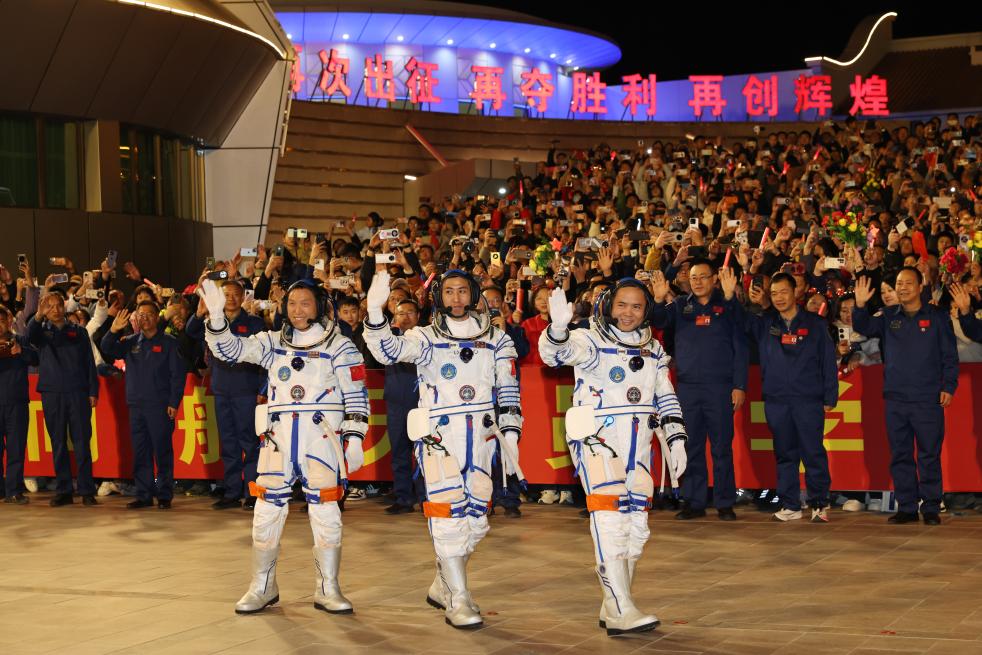
Chinese astronauts Zhang Lu (R), Wu Fei (C) and Zhang Hongzhang attend a send-off ceremony at the Jiuquan Satellite Launch Center in northwest China on Oct. 31, 2025. A send-off ceremony for the three Chinese astronauts of the Shenzhou-21 crewed space mission was held Friday at the Jiuquan Satellite Launch Center in northwest China, according to the China Manned Space Agency. (Photo by Wang Jiangbo/Xinhua)
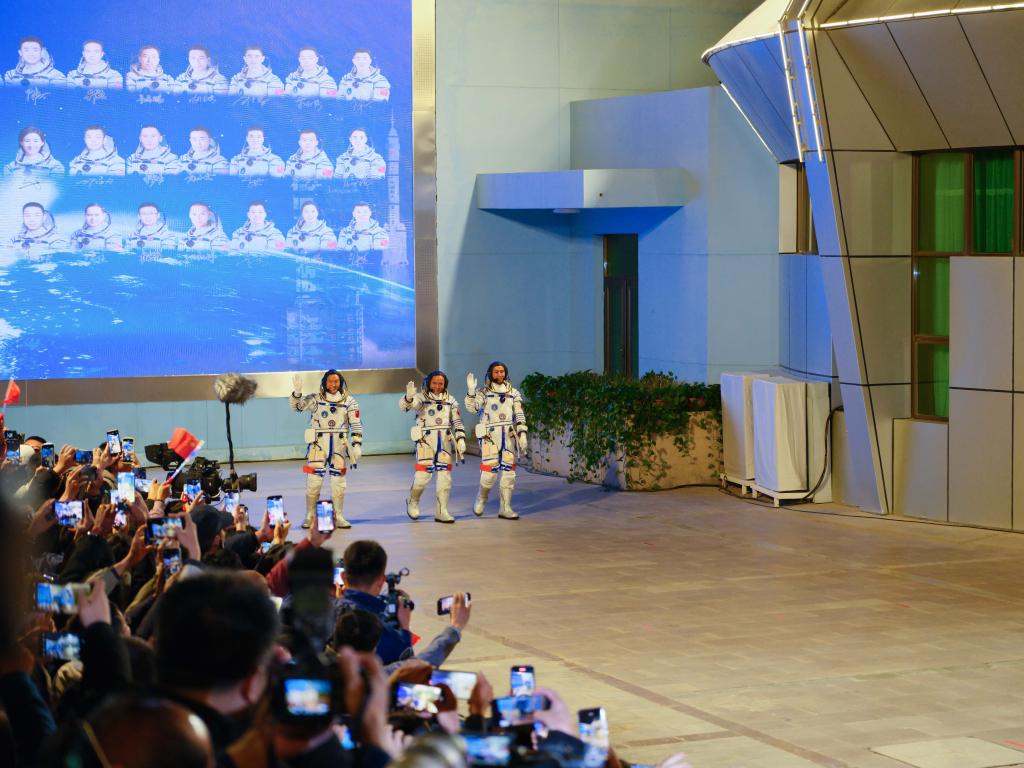
This photo taken on Oct. 31, 2025 shows a scene at the send-off ceremony for the three Chinese astronauts of the Shenzhou-21 crewed space mission at the Jiuquan Satellite Launch Center in northwest China. A send-off ceremony for the three Chinese astronauts of the Shenzhou-21 crewed space mission was held Friday at the Jiuquan Satellite Launch Center in northwest China, according to the China Manned Space Agency. (Xinhua/Ma Jinrui)









